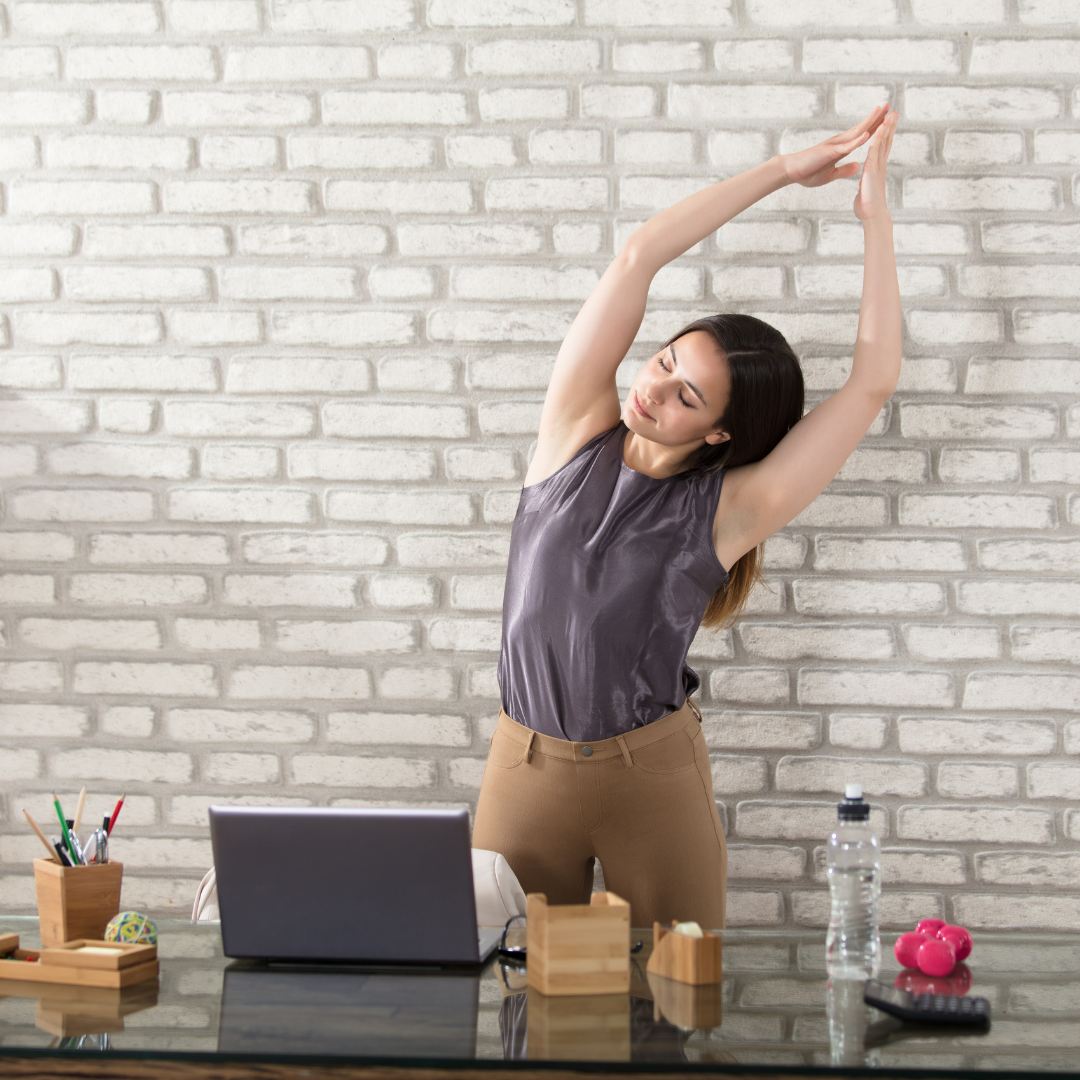Working from home (WFH) – can be a real pain in the butt (and back)!
PILATES FOR DESK WORKERS
This year many of us have had to abandon the daily commute to the office in place of working from home. Whilst WFH has it’s many advantages for example, working in your lounge pants, more freedom and many pounds saved on takeaway coffees, it can also mean that we have a less than ideal desk set up for those endless Zoom calls! Since the pandemic how many of you reading this have found yourself hunched over your kitchen table or slumped on your sofa whilst trying to reply to emails? In this blog I’ll talk about the effects of prolonged sitting and outline some handy tips for desk set-up as well as give you access to my desk Pilates session so you can keep moving whilst you work!
The human body is designed to move
Humans are built to stand upright and for movement. For thousands of years, that’s exactly what humans did. In the mid-20th century, however, rapid technological advances (think: cars, TVs, computers, etc.) began chipping away at physical activity, and as technology did more of the heavy lifting, people became increasingly sedentary. Think of the human skeleton and how many bones and joints we have, we have these joints because they allow us to move. It’s when we inhibit the body’s natural desire to move that problems arise.
What are the effects of sitting at my desk with bad posture?
Essentially, sitting in the same position every day without moving can have detrimental effects on the body, creating muscular imbalances and a very unhappy and uncomfortable version of yourself! By sitting all day, you’re not depending on your powerful lower body muscles to keep you up. Over time this can lead to muscle atrophy, which is the weakening of these muscles. Without strong leg and glute muscles to stabilize you, your body is at risk of injury. As with your leg and glute muscles, your hips and back can suffer from prolonged sitting. It can cause your hip flexors to shorten and if you are sitting with poor posture this can cause compression on the discs in your spine, resulting in chronic pain.
As I’ve already mentioned our body is designed to be in an upright position and this is where we function efficiently and with ease. So if we are going to sit for long periods at a time it is important that we move often and that our desk is set up correctly.
Where should my body be in relation to my desk?
Keep the head up — It is important to not bend your head down and work for long hours. It is necessary to focus on aligning your head and neck right above your shoulders. Try to avoid straining forward.
Move your mouse close — It is ideal to place the mouse right next to the keyboard so that you do not have to overreach or twist your shoulder, arm, or wrist when clicking.
Choosing the right chair — Your upper back should be straight. Your lower back has a natural curve that should be supported by your chair. It is important to sit on a chair where you can rest your lower back against a lumbar support. You can tilt the back of the chair so it is slightly reclined.
Sit within reach — The ideal way to sit is to distance your torso from the monitor about an arm’s length. The monitor should be 2 to 3 inches above the eye level.
Feet position — It is important to keep your feet flat on the floor and shoulder-width apart to avoid tension in your knees and ankles.
Taking short breaks — Working for long hours and sitting in the same position for long hours affects not just your back but also makes you less productive. Getting up at least once an hour reduces the pressure on spinal discs and boosts circulation to all parts of the body, including the brain. This makes you more limber and less stressed. Taking a break rejuvenates you and makes you more productive. Keep reading to follow our Pilates desk workout!
Can Pilates be beneficial to me if I’m working at a desk?
Pilates is great because it focuses on those joints that become stiffened throughout the day and helps to improve their range of motion and control. Through targeted exercises, you’ll begin strengthening those deep core muscles which are responsible for supporting the spine and pelvis to help you maintain good posture. You’ll start to become more aware of the muscles you need to use to help support your body when at the desk.
Pilates can help you not only by counteracting the detrimental effects of inactivity, but also by improving your postural muscles, mobility, and habits during the working day. As Pilates works to address stability muscles, we should also understand that there is no perfect posture, but that a balance with movement is required to optimize our health.
During a Pilates session, you can realign the body and work the muscles that are neglected or overly tight from a desk-oriented work life. Over time, you can even incorporate this learning into your working life, so that proper alignment becomes the norm in your day instead of the exception.
Try our desk Pilates video ↓ so you can relieve any aches pains throughout your day!
Click on the video above to play our Pilates at your desk video.
If you enjoyed this video, and would like to practice Pilates with me at home, please take a look at my LHP At Home subscription.





